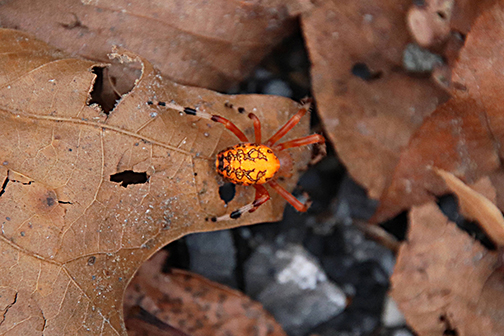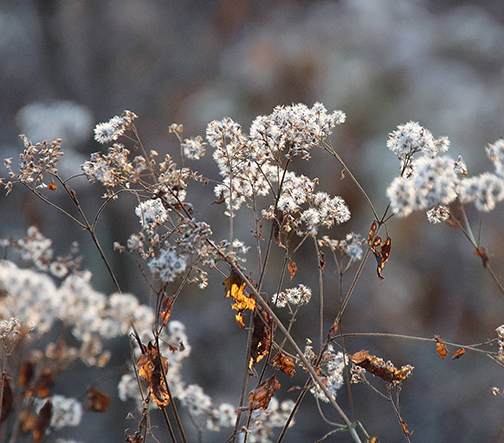Happy Mystery Monday! Can you guess what is pictured in photo below?

The answer to last week’s mystery is white snakeroot, Ageratina altissima, pictured in photo below:

White snakeroot is a perennial herb that is native to eastern and central North America. All parts of the plant are poisonous to most warm-blooded animals, including humans. When the plant is consumed by cattle, the meat and milk become contaminated with toxins, which, if consumed, can be passed on to humans. The poisoning is called milk sickness and can cause nausea, weakness, abdominal discomfort, and more.
The flowerheads of the wine snakeroot are arranged in loose, terminal, flat-topped clusters in white. Blooms appear from July to October. After blooming, small seeds with fluffy white tails are released in the wind.
White snakeroot is one of the last wild natives to flower, providing nectar late in the season to hungry insects, like bees, butterflies, wasps, moths, and flies.
This plant adapts well to different growing conditions. It is found in woods, brush thickets, and also in
shady areas with open bare ground. It can also be weedy in shady landscapes and hedgerows.
Mystery Monday is sponsored by the Spy Newspapers and Adkins Arboretum.


Write a Letter to the Editor on this Article
We encourage readers to offer their point of view on this article by submitting the following form. Editing is sometimes necessary and is done at the discretion of the editorial staff.